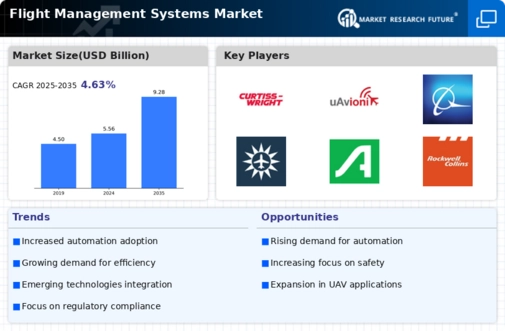Rising Demand for Efficient Air Travel
The Flight Management Systems Market is experiencing a notable surge in demand for efficient air travel solutions. As air traffic continues to increase, airlines are seeking advanced flight management systems to optimize routes, reduce fuel consumption, and enhance overall operational efficiency. According to recent data, the aviation sector anticipates a growth rate of approximately 4.5% annually, which underscores the necessity for sophisticated flight management systems. These systems not only streamline flight operations but also contribute to significant cost savings, making them indispensable for airlines aiming to remain competitive in a rapidly evolving market. The integration of real-time data analytics further enhances decision-making processes, thereby improving flight safety and reliability. Consequently, the rising demand for efficient air travel is a primary driver propelling the growth of the Flight Management Systems Market.
Regulatory Compliance and Safety Standards
Regulatory compliance and safety standards are critical drivers within the Flight Management Systems Market. As aviation authorities worldwide implement stricter regulations to enhance safety and operational efficiency, airlines are compelled to adopt advanced flight management systems that meet these requirements. The International Civil Aviation Organization (ICAO) has established guidelines that necessitate the integration of sophisticated technologies in flight operations. This regulatory landscape is projected to create a market opportunity valued at several billion dollars, as airlines invest in systems that ensure compliance and enhance safety protocols. Furthermore, the increasing focus on safety in aviation operations is likely to drive the demand for flight management systems that can provide real-time monitoring and reporting capabilities. Consequently, adherence to regulatory compliance is a significant factor propelling the growth of the Flight Management Systems Market.
Growing Focus on Environmental Sustainability
The growing focus on environmental sustainability is reshaping the Flight Management Systems Market. Airlines are increasingly prioritizing eco-friendly practices to reduce their carbon footprint and comply with international environmental regulations. Flight management systems play a pivotal role in this transition by optimizing flight paths and reducing fuel consumption, which directly contributes to lower emissions. Recent studies indicate that implementing advanced flight management systems can lead to a reduction in fuel usage by up to 15%, which is a substantial improvement in sustainability efforts. As the aviation industry faces mounting pressure to adopt greener technologies, the demand for flight management systems that support sustainable operations is expected to rise. This shift not only aligns with The Flight Management Systems Industry.
Increased Investment in Aviation Infrastructure
Increased investment in aviation infrastructure is a significant driver of the Flight Management Systems Market. Governments and private entities are channeling substantial resources into upgrading airports and air traffic management systems to accommodate the growing volume of air travel. This investment is expected to exceed hundreds of billions of dollars over the next decade, creating a favorable environment for the adoption of advanced flight management systems. Enhanced infrastructure facilitates the integration of modern technologies, allowing for more efficient flight operations and improved passenger experiences. As airports modernize and expand, the demand for sophisticated flight management systems that can seamlessly integrate with new technologies will likely increase. This trend underscores the importance of infrastructure development as a catalyst for growth within the Flight Management Systems Market.
Technological Advancements in Navigation Systems
Technological advancements in navigation systems are profoundly influencing the Flight Management Systems Market. Innovations such as satellite-based navigation and enhanced GPS technologies are enabling more precise flight path management. These advancements facilitate improved situational awareness for pilots, thereby enhancing safety and operational efficiency. The market for navigation systems is projected to grow significantly, with estimates suggesting a compound annual growth rate of around 6% over the next few years. This growth is largely attributed to the increasing adoption of advanced avionics and the integration of artificial intelligence in flight management systems. As airlines and operators prioritize safety and efficiency, the demand for cutting-edge navigation technologies within the Flight Management Systems Market is expected to escalate, driving further investment and development in this sector.


















Leave a Comment